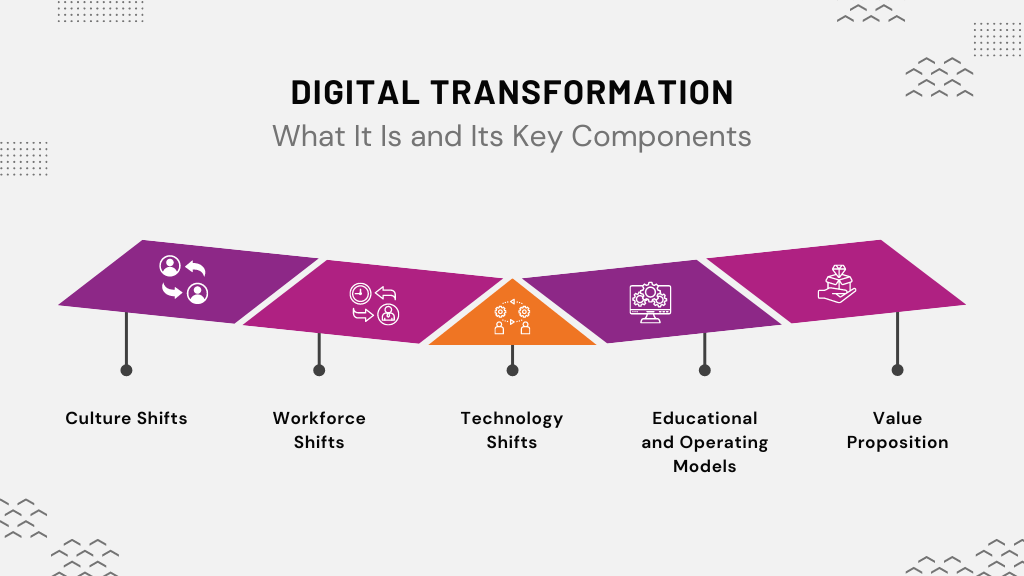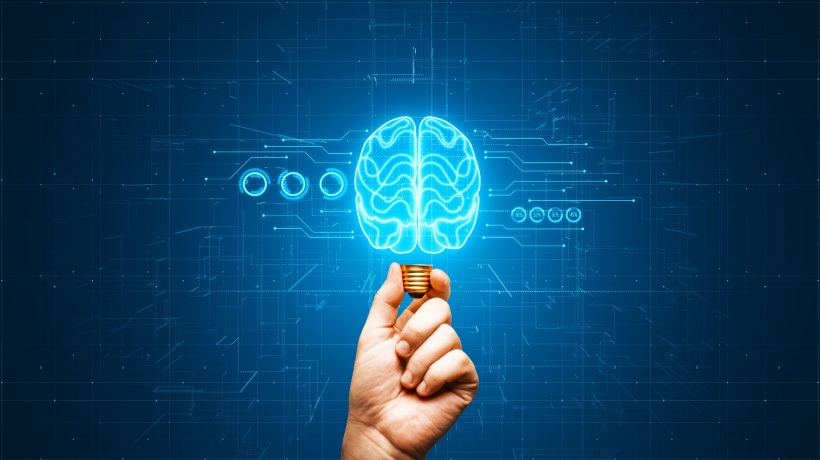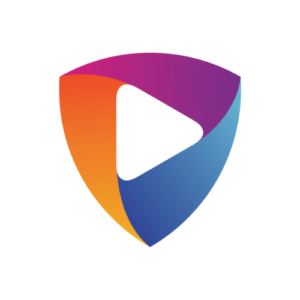Digital Transformation In Higher Education
Have you thought about how the wave of digital change is sweeping through higher education? Nowadays, this wave is a core change in the way universities function and provide education. Just look at the growing number of higher education leaders who are now making digital change a priority. The 2023 Higher Education Digital Transformation Survey by HolonIQ shows a significant jump in the number of higher education leaders who see digital transformation as a key concern. The figure has soared from 50% to 69% in just one year. This surge underlines how critical it is for universities to get on board with digital transformation for university and make the most of it.
What Is Digital Transformation?
Digital transformation in the education sector refers to the integration of digital technology into all areas of a university, fundamentally changing how they operate and deliver value to students. It's not just about upgrading old systems but reimagining education in the digital age. Let's look into some key components:

1. Culture Shifts
This involves changes in the overall mindset and approach of an institution. It's about embracing innovation and flexibility, moving away from traditional educational models to more dynamic and student-centered approaches.
2. Workforce Shifts
Digital transformation requires a shift in the skillsets and roles within the university workforce. There's a growing need for digital literacy among educators and administrative staff.
3. Technology Shifts
This is about the adoption of new technologies like AI, cloud computing, and data analytics, which play a crucial role in enhancing educational and administrative processes.
4. Educational And Operating Models
It's not just about using digital tools but also about transforming the very models of teaching and learning. This includes digitalizing the university curriculum, making it more accessible, flexible, and tailored to the needs of today's students.
5. Value Proposition
Digital transformation affects the university's value proposition—how it positions itself in the competitive field of higher education and what unique offerings it can provide in a digitally advanced landscape.
Key Aspects Of Digital Transformation In Higher Education
Digital transformation for universities includes various dimensions, each playing a pivotal role in reshaping the educational landscape. Here's an overview of the key aspects:
1. Fixed Vs. Adaptive eLearning
Traditional fixed eLearning follows a rigid schedule and is designed for a general classroom setting. In contrast, adaptive eLearning customizes instruction to individual or small group needs, offering a more personalized learning experience.
2. Asynchronous Vs. Synchronous eLearning
Asynchronous eLearning allows students to learn at their own pace using resources like videos and quizzes, whereas synchronous eLearning involves real-time, scheduled online classes, providing a structured learning environment.
3. Interactive, Collaborative eLearning Vs. Individual eLearning
Interactive eLearning involves learning in a group setting with peers or mentors, enhancing engagement and collaboration. Individual eLearning, on the other hand, is self-paced, using resources like online lectures or educational videos.
4. Remote Learning Vs. Online Learning
Remote learning is typically a temporary shift from traditional classroom learning to an online format, often due to external factors like the COVID-19 pandemic. Online learning, however, is a more permanent form of education entirely conducted over the internet.
5. eLearning Vs. Digital Learning
While eLearning is a component of digital learning focused on electronic educational practices, digital learning encompasses the entire spectrum of learning experiences using digital technologies. This includes online exams, virtual meetings, and networking events.
6. MOOCs Vs. SPOCs
Massive Open Online Courses (MOOCs) and Small Private Online Courses (SPOCs) both offer online learning experiences but differ in scale. MOOCs are designed for large numbers of participants, whereas SPOCs cater to smaller, more intimate groups.
7. Virtual Classes Vs. Mobile Learning
Virtual classes are conducted over the internet using platforms like Zoom, while mobile learning involves educational content delivered through mobile apps, offering greater flexibility and accessibility.
8. Social Learning Vs. Adaptive Learning
Social learning is about collaborative, peer-group learning, often in a hybrid format like group discussions on digital platforms. Adaptive learning, in contrast, focuses on customizing the learning experience to the needs of an individual or a small group.
Each of these aspects contributes to the digital content for the university, enhancing the learning experience and preparing students for a digitally-driven future.
Challenges In Implementation
Implementing digital transformation in higher education is a complex and multifaceted challenge. Several key issues arise when universities try to digitalize their curriculum and embrace digital transformation strategies.
- Changing teaching ways
In universities, many teachers are used to the old ways of teaching and might not be ready for digital teaching. They might not know how to use new digital tools, or they might find these new methods add too much work. This makes it hard to digitalize the university curriculum and use new technology in classes. - Tech problems
Sometimes, universities don't have the right technology or internet stuff to do digital learning well. When schools suddenly had to do online classes, like during the COVID-19 pandemic, these problems became really clear. They showed that universities need better plans and tools for digital learning. - Data issues
Universities have a lot of separate departments, and each one might keep its data separate. This makes it hard to share information and use it to make things better for students and teachers. Solving this problem is important for successful digital transformation. - Training for teachers
Knowing how to use digital tools in teaching is really important. However, not all teachers in universities know how to do this. Universities need to find out what digital skills their teachers have and then help them learn more so they can teach well using digital tools.
Final Thoughts
Adopting digital transformation isn't just about picking up new tech tools; it's about completely reshaping the way we think about education. It opens the door to exciting opportunities to better learning experiences and get students ready for a world filled with digital tech. There are various tools and resources available to support educational institutions in this journey. These include updating curriculums and incorporating modern, digital methods of learning, aiming for a more interactive and effective education system.
Image Credits
- The image within the body of the article was created/supplied by the author.


